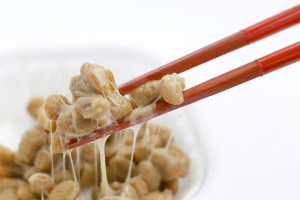Shopping at a Japanese Supermarket
2016.07.21

The short answer is yes, you will be able to eat.
The longer answer must include how to find the foods you’re looking for (and maybe a few surprises you didn’t know you wanted!), vegetarian options, and of course, the importance of keeping an open mind. I get it: the fermented beans look (and smell) freaky. But you didn’t come all the way to Japan to subsist off of toast and ice cream, right?
You may try something new and absolutely decide that nope, that one isn’t for you. But trying new things is part of the experience, and even a regrettable flavor can turn into a good story. You might just find a new favorite, too!
Let’s take a look…
In general, your typical Japanese supermarket shouldn’t actually look that different from the ones you’re used to at home. The greatest difference will come in the products, in the, um…what is that?
「Natto, or fermented soy beans, a popular breakfast dish often served on rice.」
You will also be able to find many familiar fruits and vegetables and other products. Your options for seasoning may be a little different than what you’re used to, and may require a little experimentation. Here are some of the most commonly used ingredients in home Japanese cooking:
- Soy sauce
- Mirin (technically a type of rice wine, with lower alcohol content and higher sugar content than typical sake)
- Miso (it’s great in soup, but try it on fish and in other ways as well! Miso is a kind of thick paste made from fermented soybeans)
- Ponzu (a citrus-based, vinegar-like sauce)
- Dashi (soup stock, often, but not always made from dried fish flakes)
Labels, labels, labels!
Speaking Japanese—even a little—will be your biggest saving grace at the super market. It may be obvious, but if you can’t find an item, ask someone who works at the supermarket, and they should be able to point you in the right direction. Check the labels on your food, and not just for the price. There are two terms that indicate how long a product will last, primarily消費期限 /shouhikigen, which is used for perishable foods, like prepared lunches, tofu, etc, and賞味期限 /shoumikigen, which indicated when the flavor will be best for canned goods and non-perishable foods.












